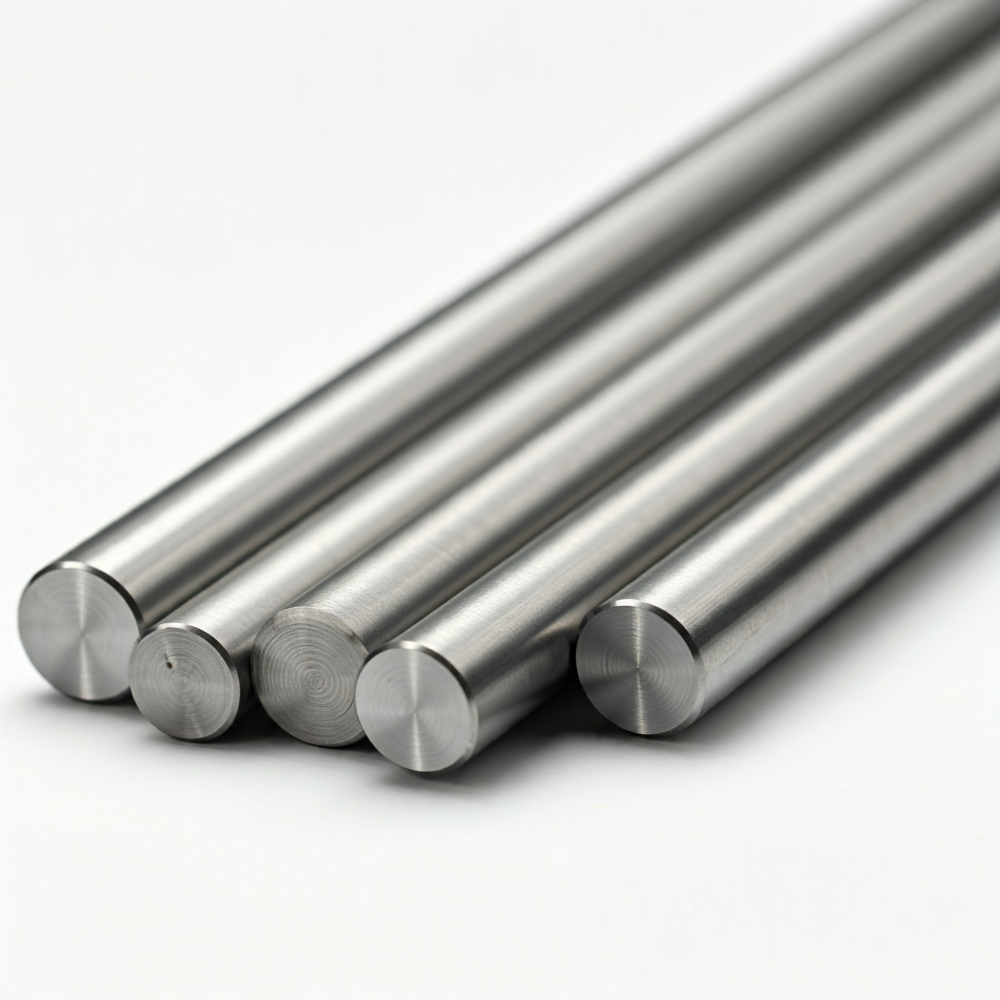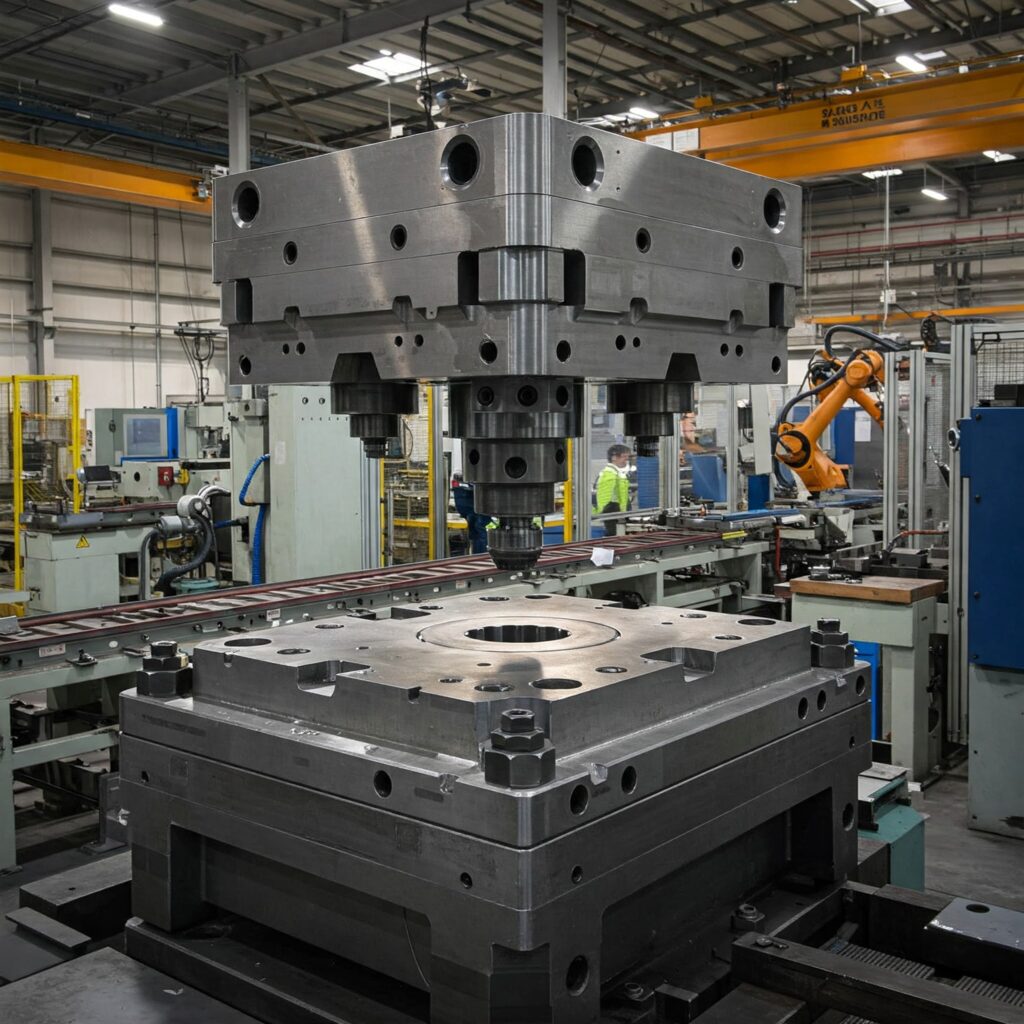Our company, Aobo Steel, mainly supplies forged tool steel. This article will discuss the problems we faced while forging steel and how to avoid them. Generally, round bar steel that is 70mm or larger is forged. Bars smaller than 70mm are hot-rolled. Forging is used for plates with thicknesses of 30mm or more, and hot-rolling is used for thicknesses below 30mm.
The production process of forged tool steel
Liquid steel is poured into ingot molds and solidified into steel ingots. Tool steel ingots typically weigh between 0.5 and 10 tons. When remelting and refining are needed, these ingots serve as the base material for processes like ESR (Electroslag Remelting). Then, a forging machine forges them. Read more about What is ESR
Engineers refer to the ratio of a steel ingot’s initial cross-sectional area to its area after forging as the forging ratio. As the forging ratio increases, the process breaks down the microstructure into finer grains and eliminates small defects, improving toughness and ductility. Generally speaking, once the forging ratio exceeds 5, toughness almost saturates. We consider a forging ratio of 5 as the minimum value.
Defects and Prevention
Ingot Defects
1. Segregation
Segregation happens when a steel ingot’s chemical composition and impurities distribute unevenly during solidification. Selective crystallization, changes in solubility, density differences, and flow rate variations cause this uneven distribution.
Different elements dissolve differently at varying temperatures in both the solid and liquid phases. Varying temperature gradients cause different crystallization. Shrinkage during solidification and chemical reactions also leads to segregation. These factors result in a non-uniform distribution of components on both macro and micro scales.
Segregation causes non-uniform mechanical properties and can lead to cracking defects. Forging, recrystallization, high-temperature diffusion, and post-forging heat treatment eliminate dendritic segregation in steel ingots. However, zonal segregation resists elimination by heat treatment. Engineers can only homogenize it through repeated upsetting and drawing deformation processes.
2. Inclusions
Non-metallic compounds that do not dissolve in the metal matrix are called non-metallic inclusions. Common non-metallic inclusions include sulfides, oxides, and silicates. We can classify inclusions into two types: internal and external. Internal inclusions form during smelting and casting from chemical reactions. External inclusions come from outside sources. They include sand, refractory materials, and furnace fragments. Their presence harms the hot forging process. It also lowers the quality of the forged part. Inclusions disrupt the metal’s continuity. Under stress, they cause stress concentrations. These concentrations lead to microscopic cracks. They may even become the source of fatigue failure in the forged part.
3. Gases and Bubbles
Liquid steel dissolves many gases, including hydrogen, nitrogen, and oxygen. Their solubility is much higher in liquid steel than in solid steel. When the ingot solidifies, it releases most of the gas. However, some gas remains inside or beneath the ingot’s surface. This gas forms bubbles.
Bubbles inside the ingot can be forged and welded if they remain closed or if their inner walls stay unoxidized. In contrast, bubbles under the surface often cause cracks.
The common residual gases in steel ingots are oxygen, nitrogen, and hydrogen. Oxygen and nitrogen form oxides and nitrides as the steel solidifies. These compounds create inclusions. Hydrogen is the most harmful gas in steel.
4. Shrinkage Cavity and Porosity
During the ingot’s solidification, physical shrinkage occurs, and voids form in some areas without replenishing liquid steel. A shrinkage cavity appears at the ingot head’s axial center, where solidification happens last; this defect is unavoidable because the liquid steel cannot fill the void. The mold structure and pouring process affect the cavity’s size and location, and an inappropriate mold or poor top insulation can let a secondary cavity (pipe) extend into the ingot body.
Forgers usually cut off the shrinkage cavity and riser during forging because if left, the cavity cannot be welded, causing internal cracks and scrap. Porosity forms from intergranular voids created by final solidification shrinkage and from micropores produced by gas precipitation. These pores grow larger in segregation areas and remain as small pinholes in dendritic regions, which lowers the ingot’s density, disrupts the metal’s continuity, and reduces the forged part’s mechanical properties. Consequently, forgers must apply large deformations during forging to eliminate the porosity.
Improper Forging
1. Forging cracking caused by improper heating
- Overheating or uneven heating causes the forging to overheat or burn locally or as a whole, causing the grains to coarsen and grain boundaries to oxidize or melt, resulting in the forging cracking or surface cracking;
- If the heating rate is too fast, the temperature difference between the surface and the interior of the forging is too large, resulting in a large thermal stress and causing cracking;
- Suppose the heating temperature is too low or the holding time is too short. In that case, the temperature difference between the inside and outside is large, resulting in large thermal stress. This stress leads to central or transverse cracking on the edges or flat surfaces of the forging due to the large deformation resistance and reduced plasticity.
2. Cracks Caused by Improper Forging Deformation
Suppose the hammering force is too strong, the deformation amount is too large in a single stroke, and the deformation speed is too fast. In that case, the internal tensile stress will increase due to the large difference in deformation between the surface and the core of the forging. This is prone to the formation of cross cracks in the interior or front and rear end faces. Large and excessive deformation can cause the core temperature to rise and overheat, resulting in cracking.
3. The Impact of Improper Final Forging Temperature on Forging Quality
The final forging temperature directly impacts the quality of die forgings. If the final forging temperature is too high, the grains will continue to grow during the cooling process, thereby reducing the mechanical properties of the steel. If the final forging temperature is too low, under the condition of poor low-temperature plasticity, excessive hammer blows can cause immediate forging cracks. Generally, the final forging temperature should be slightly higher than the temperature of Ar or Ar to ensure that the forging takes place in a single-phase region with relatively uniform plasticity and stress state.
4. Impact of Improper Cooling on Forged Part Quality
Certain cold work tool steels, such as D3 tool steel, have high alloy content and good permeability. They can undergo martensitic transformation upon air cooling from high temperatures. Under the combined action of internal and residual stress from deformation, these steels are prone to longitudinal cracking if not slowly cooled after forging. For such tool steels, slow cooling methods such as sand cooling, ash cooling, furnace cooling, or immediate annealing after forging are necessary.
5. White spots appearing after forging
This primarily occurs in medium-carbon low-alloy large-section modules, such as 1.2714 tool steel, and sometimes also in low-carbon medium-alloy precipitation-hardening steels. The main reason is excessive hydrogen in the steel, coupled with rapid cooling at low temperatures (150-250℃) after forging, leading to brittle fracture and the formation of white spots (cracks) in the steel. The presence of white spots reduces the mechanical properties of the steel and can lead to quenching cracks. If white spots are detected, the forging ratio should be increased, and the large section should be reforged into a smaller section to try to weld the cracks together. Otherwise, the steel with white spots should be rejected.
About forged tool steels from Aobo Steel
Aobo Steel has more than twenty years of experience in forging tool steel production, located in Huangshi, the main output of die steel in China. We have rich experience producing common tool steel, such as D2 tool steel, D3 tool steel, A2 tool steel, H11 tool steel, H13 tool steel, and so on. We also have R&D capability for customized tool steel.


